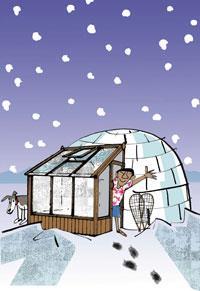Glass is amazing stuff

Glass is amazing stuff. It has largely made chemistry possible - what would we do without chemical glassware? In optics, it has given us those wonderful instruments the telescope, the microscope, and the camera.
The optical refractive index of glass can be varied from about 1.5 to about 1.8. Nobody really knows why. The dispersion of that index from red to violet is even more puzzling. The great Michael Faraday wasted over a year of his genius trying to reduce it to zero - seeking an optical glass for the objective lenses of astronomical telescopes. (Maybe his genius was not entirely wasted. That research came up with the lead borosilicate glass which first showed the Faraday effect, the magnetic rotation of the plane of polarisation of light. John Tyndall later likened Faraday’s achievement to the Weisshorn in the Alps - high, beautiful, and alone.) Even the great Ernst Abbe, of Carl Zeiss in Jena, Germany, did not extend the optical range of glass very much.
And yet, at the same time, glass is a mighty nuisance. Domestically we use it for windows, in thin panes. These days we are all trying to save domestic thermal energy, yet window glass has a high thermal conductivity. It lets heat out of the house in vast amounts. Yet every house needs lots of windows. All those clever schemes to save domestic thermal energy, loft insulation, cavity-wall insulation, and so on, are pretty much nullified by glass windows. In the UK the housing stock mainly exists already. So highly engineered thermal window insulation - double-glazing, triple-glazing and so on - are seldom feasible. Besides, these have problems of their own; they tend to leak or get misty. We strongly need a thermally insulating glass.
My approach would be to make a glass with holes in it. Light has a wavelength a little under a micrometre, so the holes should be much smaller than this. Some 50 nanometres might be about right. I am reminded of buckminsterfullerene, that hollow C60 carbon molecule. It was first made by firing a laser pulse at a chunk of graphite, and looking at the hot detached fragments by mass spectroscopy. Later, a method of making it from a special carbonaceous smoke was devised.
Silicate structures, like carbon structures, are known with chain, area, and volume forms - common clay is a volume aluminosilicate. We already make a very light and open ’fumed silica’ by injecting liquid SiCl4 into an oxygen-hydrogen flame. So it might be feasible to make a hollow spherical polymeric SiO2 molecule, about 50nm in diameter, and soluble in melted glass.
For technical purposes, of course, chemical purity does not matter. Even quite an impure silicaceous smoke might give a product which dissolved in molten glass and contained enough hollow molecules to reduce the thermal conductivity of the resulting solid.
If such a scheme could be made to work, it might transform the building and window businesses. The pestilential thermal conductivity of glass would go down at last. Lens manufacturers would be happy too. The new hole-filled glass should have a lower refractive index than was previously feasible. All sorts of zoom lenses and other tricky optical objects might now be practical. Troublesome non-vitreous materials, such as calcium fluoride, could be happily abandoned.
Even the esqimaux Inuit might be more cheerful. Their traditional fishing weights were made of natural cryolite (sodium aluminium fluoride).
Fish cannot see it; it’s refractive index of 1.35 closely matches the 1.33 of water. The new hole-filled glass might do even better!
David Jones












No comments yet